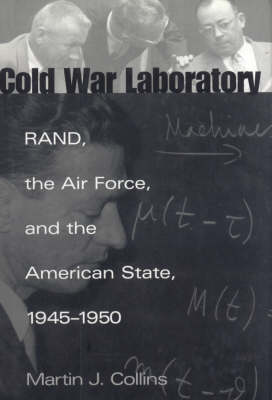Smithsonian history of aviation & spaceflight
1 total work
In 1946, before the start of the Cold War with the Soviet Union, the Army Air Forces established Project RAND - a groundbreaking 'think tank' designed to link leaders in the military and aircraft industry. The new organization was a response to fears that long-range bombers, guided missiles, and atomic bombs inaugurated a new era of danger. Modern war was now total war, a contest between entire societies, and demanded the commitment of peacetime preparation. Science and technology were crucial for such preparation, and RAND offered the Air Force a conduit to the expertise of industry and universities. As an institutional crossroads, RAND became a unique place to experiment with methods and ideas to prepare a pluralistic, democratic society for total war. Martin J. Collins examines the critical years of this experiment through an evolving cast of key individuals: Hap Arnold and MIT professor Edward L.
Bowles; Rowan Gaither, president of the RAND board of trustees; Frank Collbohm and Lawrence Henderson, director and associate director of RAND; and mathematician Edwin Paxson, the leader of RAND's first system analysis - a RAND invention that sought to make a science of the study of war. Collins presents an in-depth examination of the birth of systems analysis and how it combined science, politics, and postwar concerns. In developing systems analysis, RAND drew on a spectrum of science and engineering disciplines, and from the fields of economics, political science, and sociology. Its research symbolized the new and far-reaching effects of our response to the Cold War.
Bowles; Rowan Gaither, president of the RAND board of trustees; Frank Collbohm and Lawrence Henderson, director and associate director of RAND; and mathematician Edwin Paxson, the leader of RAND's first system analysis - a RAND invention that sought to make a science of the study of war. Collins presents an in-depth examination of the birth of systems analysis and how it combined science, politics, and postwar concerns. In developing systems analysis, RAND drew on a spectrum of science and engineering disciplines, and from the fields of economics, political science, and sociology. Its research symbolized the new and far-reaching effects of our response to the Cold War.
